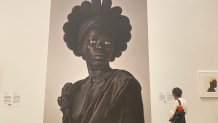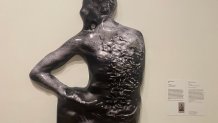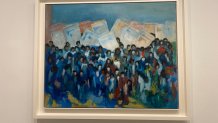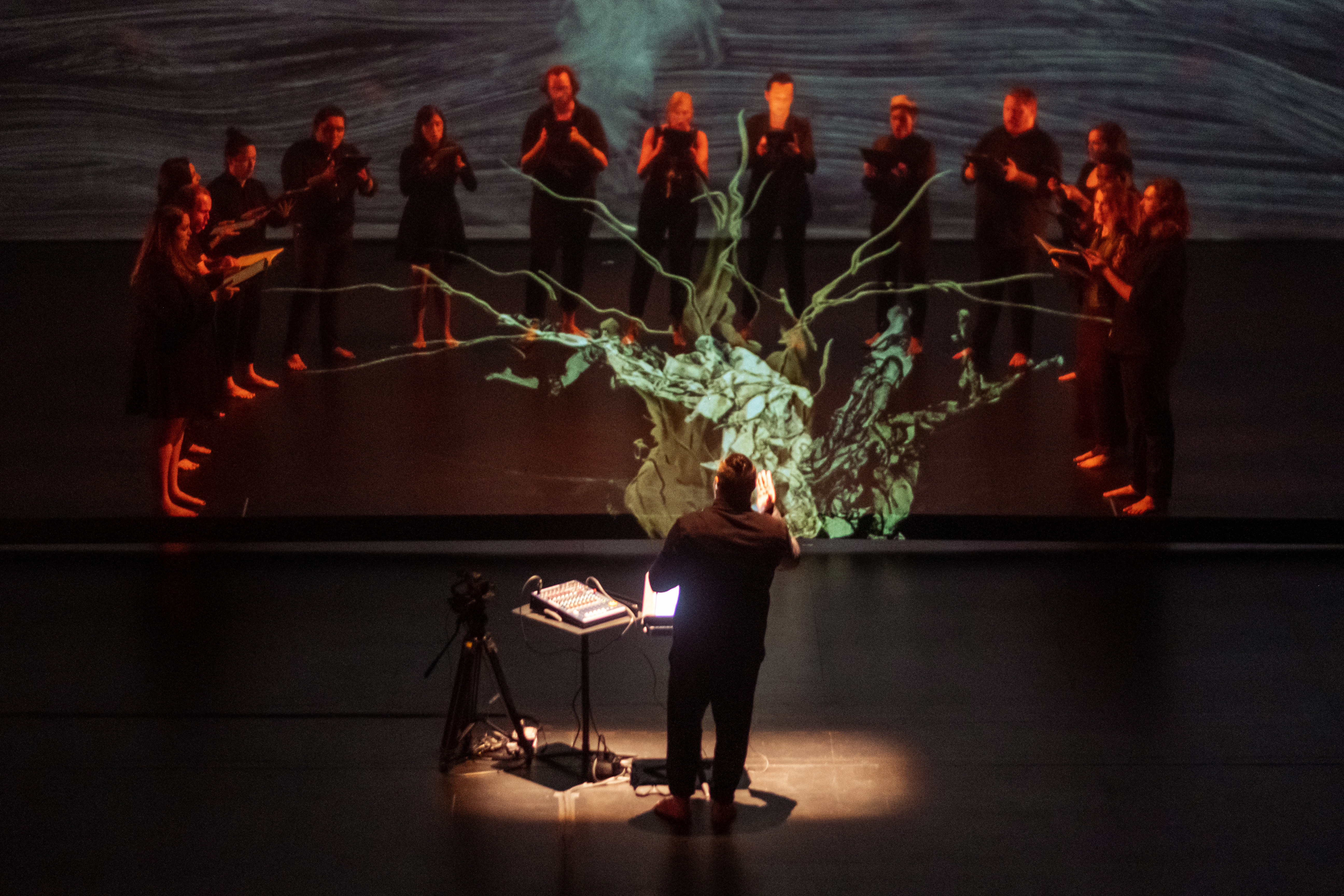
To understand history, look at art.
Afro-Atlantic Histories, currently on view at the Dallas Museum of Art through Feb. 11, immerses visitors in the history of the Black Diaspora, revealing the complicated legacy of the transatlantic slave trade.
Featuring around 100 artworks, the Dallas Museum of Art’s presentation of the exhibition, which originated in 2018 at the Museu de Arte de São Paulo, is the last stop of its U.S. tour.
“It’s great to see how it has evolved during its tour,” said Ade Omotosho, The Nancy and Tim Hanley Assistant Curator of Contemporary Art and co-curator of this exhibition. “Our exhibition is an epic survey of the Black Diaspora that spans the 17th century to the present.”
Get DFW local news, weather forecasts and entertainment stories to your inbox. Sign up for NBC DFW newsletters.
Rather than display the artworks produced in Africa, the Americas, the Caribbean, and Europe chronologically or geographically, the exhibition is organized in six thematic sections: Maps and Margins, Portraits, Rites and Rhythms, Everyday Lives, Enslavements and Emancipations, and Resistances and Activisms.
“What I like about this organization is that it makes for this really compelling juxtaposition between historical artworks and much more contemporary artworks,” Omotosho said.
Maps & Margins is the first section visitors encounter.
“It’s the section of the exhibition that most directly confronts the history of the transatlantic slave trade,” Omotosho said.

Aaron Douglas’ Into Bondage reflects upon the displacement of Black people from the perspective of Harlem Renaissance artists.
“So many of the artists involved in the Harlem Renaissance were trying to think about their connection to Africa and the African Continent,” Omotosho said. “In this piece, you see Aaron Douglas trying to think through this historical past that is so important to the Black Diaspora.”
The painting incorporates the image of slave ships and a resolute central figure.
“Though it is an image of enslavement and bondage, I think the way the figure is looking up and looking back too – he is looking back at a homeland he is estranged from – but I think there is also this fierce sense of determination that I think captures the resistance that has always thwarted this system of transatlantic slavery,” Omotosho said.
Portraits is filled with portraiture of Black people, reclaiming the art form from the typical European subject matter.
“This section is really important for us because it is the moment where we can celebrate representations of Black subjects that are not traditionally included in the canon,” Omotosho said.

The space is dominated by Ntozakhe II, (Parktown) by South African artist Zanele Muholi. With the poise of the Statue of Liberty, the image of a proud Black woman challenges the idea of who Lady Liberty represents.
In Rites and Rhythms, artists use spiritual and musical practices to confront history. In L’Arbre d’oublier (The Tree of Forgetting), a 27-minute long video by Paulo Nazareth, the artist walks backward 437 times around the Tree of Forgetting in Ouidah, Benin. Slaves were forced to walk around the tree seven times to forget their identity and culture. By walking backward, Nazareth is metaphorically reversing that mandatory forgetting.
Everyday Lives depicts the ordinary landscape of life that Black people created in response to their displacement. Djanira da Motta e Silva’s Bahia Market depicts a colorful marketplace with Black people selling goods to primarily white people. The concept of work and the hierarchy of slavery remains in this modern setting.

Enslavements and Emancipations looks at the horrors of slavery through the lens of the struggle for emancipation. Contemporary artists tackle the brutality of the era using historical photography. Arthur Jafa’s Ex-Slave Gordon is based on a 19th-century photograph used to demonstrate the cruelty of slavery and rally support for the Union war effort during the Civil War. Jafa reclaims the man’s humanity by including his name in the title of the work and translating the picture of his wounded back into a three-dimensional, almost life-size sculpture.
In Resistances and Activisms, the history of resistance is at the heart of the works. Alma Thomas’ March on Washington is the artist’s personal experience at the 1963 March on Washington for Jobs and Freedom. Rather than focusing on Martin Luther King, Jr. making his famous “I Have a Dream” speech, the artist focuses on the protestors with the posters. Her work is not about any specific individual, but rather the collaboration of many fighting for Black liberation.

“All of these works are really interested in excavating both the history of enslavement, but also the histories of resistance and this ongoing struggle for Black liberation that connects the Black Diaspora,” Omotosho said.
Learn more: Dallas Museum of Art



